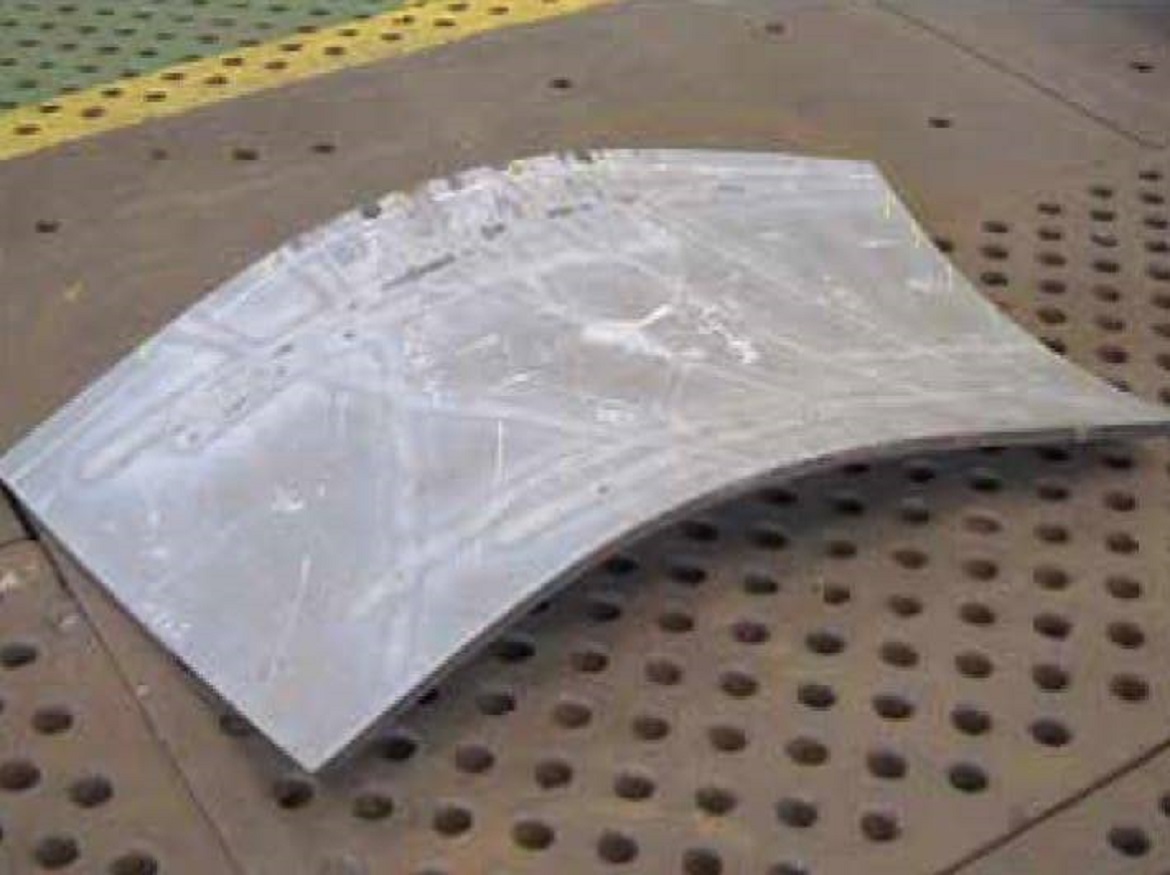Joint research by the University of Tokyo, Sumitomo Heavy Industries Marine & Engineering Co., Ltd. and ClassNK
For some, the round contours and elegant hulls of a ship resemble a woman’s figure. That might be why ships have been classified as feminine objects in gender-specific languages since antiquity. What gives a ship its shapely exteriors are the “curved shell plates” made from large, thick plates of steel, covering the entire ship from stern to bow with complex three-dimensional (3D) curves. Hundreds of ship shell plates are utilized in the structure of a ship, but only two of them are made to be similar, one used on each side of the ship body. There are a few methods to achieve curvature in a steel plate, and one traditional method to compare and evaluate curved shell plates is through using bent wooden templates.
Joint research supported by ClassNK
Under a joint research program supported by ClassNK, the University of Tokyo and Sumitomo Heavy Industries Marine & Engineering Co Ltd (SHIME) came together with ClassNK to develop a new method of evaluation for curved shell ship plates. The new approach involves a 3D Laser Scanner, and is a stark improvement from the wooden templates, providing users with higher levels of accuracy and speed. This story resulted from an interview with SHIME in Yokosuka, Kanagawa, Japan, and was based on the company’s participation in the research using the FARO® Focus Laser Scanner.
Challenges with Wooden Template Evaluations
For a long time now, the accuracy of the evaluation process using the traditional wooden template method has been an area of concern. Evaluation is tricky mainly because the curved shell plates are pressed and quenched manually by craftsmen, who may possess different skill levels. There is a high level of reliance on the experience of individual craftsmen (e.g., visual judgment and design of process plans), and this produces considerable variation in the finished product.
In addition, the old method can only evaluate parts of the plate, over which the wooden templates fit. Errors on the shell plate that go ‘unnoticed’ by the wooden templates may only be detected later during assembly. Reworking it then may cause a significant waste of time, depending on the complexity of the piece itself.

Besides, these wooden templates need to be customized and cannot be used across ships. This means that a large number of different templates would then be required, incurring costs in materials and time. Along with that also comes the need for storage and maintenance, which would add to the outlay in the long run.
As a result of these difficulties, the team set out to develop a system that is able to handle evaluations more objectively and accurately using laser scanners. The workflow of the new approach involved comparing CAD data of design plans with measurement data obtained with the Focus, as well as preparing and feeding collected data through Pupulpit (provided by UNICUS Co., Ltd), a large point cloud processing platform. On top of that, the team also generated color maps to chart the accuracy levels of the shell plate under inspection.
With the new approach, SHIME managed to increase efficiency and achieve higher accuracy levels in its curved shell plates. Mr. Akiyoshi Sugawara from SHIME’s Construction Management Division, Production Department – Production Control Group explained, “Before, we had to rely heavily on our technicians’ know-how and subjective perception to achieve the right shape for final fit. However, with this new approach, we are confident that more of our staff will be able to achieve good, consistent results – even if they possess less experience.”
Tangible Benefits with New Approach
The new approach of evaluating curved shell plates using a laser scanner has been well received, and a growing number of companies are choosing to adopt this technology.
Since implementing the new system, the time expended on revising errors has decreased significantly, demonstrating the efficacy of the laser scanner for the evaluation process. Mr. Sugawara shared, “With the assistance of the Focus, we are able to scan curved shell plates instantly by simply narrowing the scan range and changing the resolution to suit the plate size. The color maps provide convenience, as they easily let us pick out the points that require more curvature. There are more possibilities with the new technology that we yearn to uncover.”
SHIME looks forward to the day that curved shell plates can be manufactured without the use of bent wooden templates.









